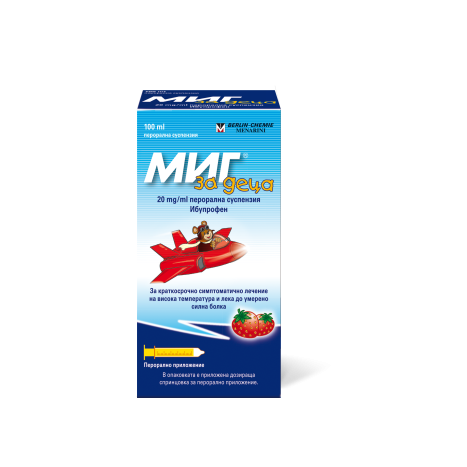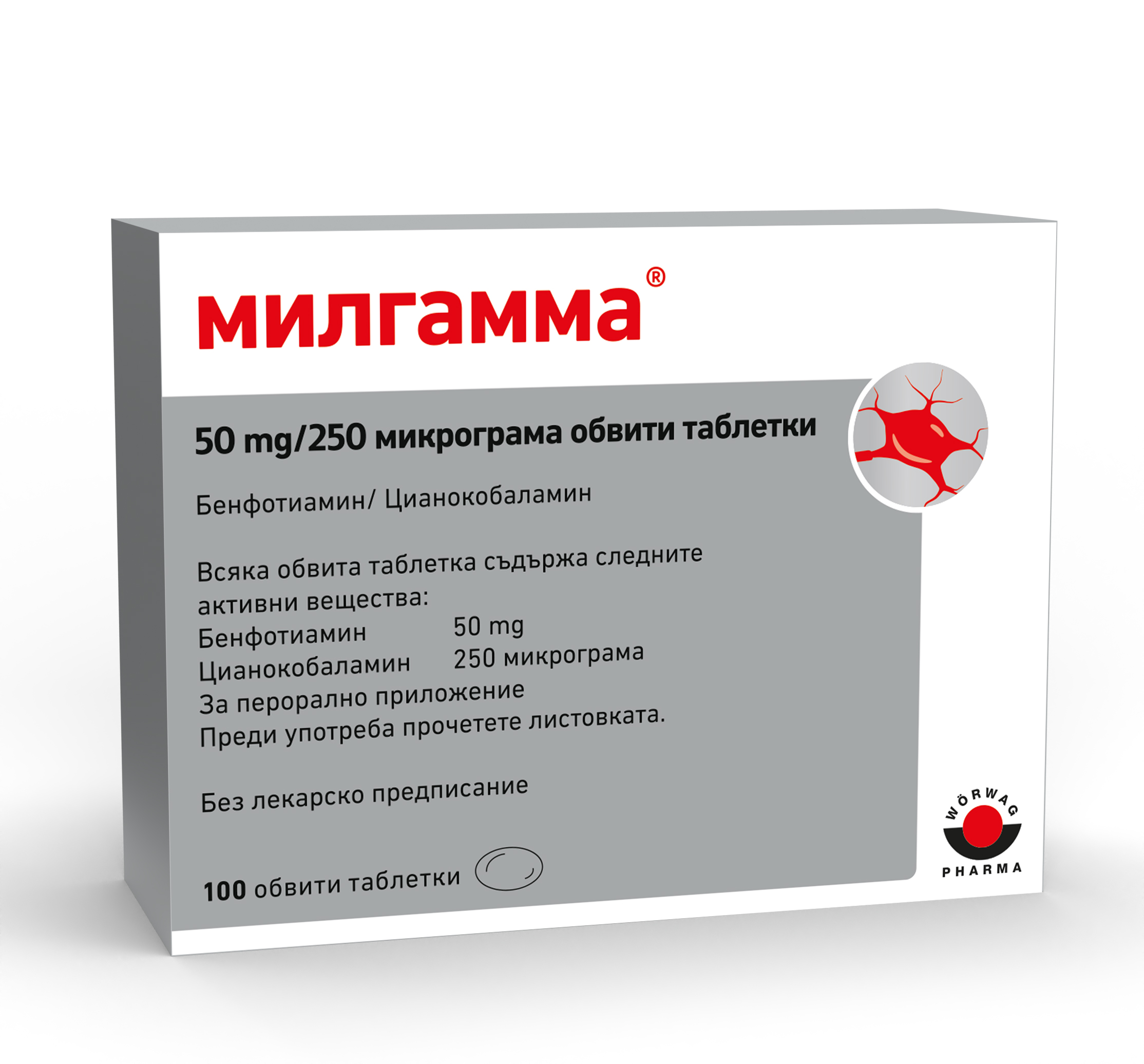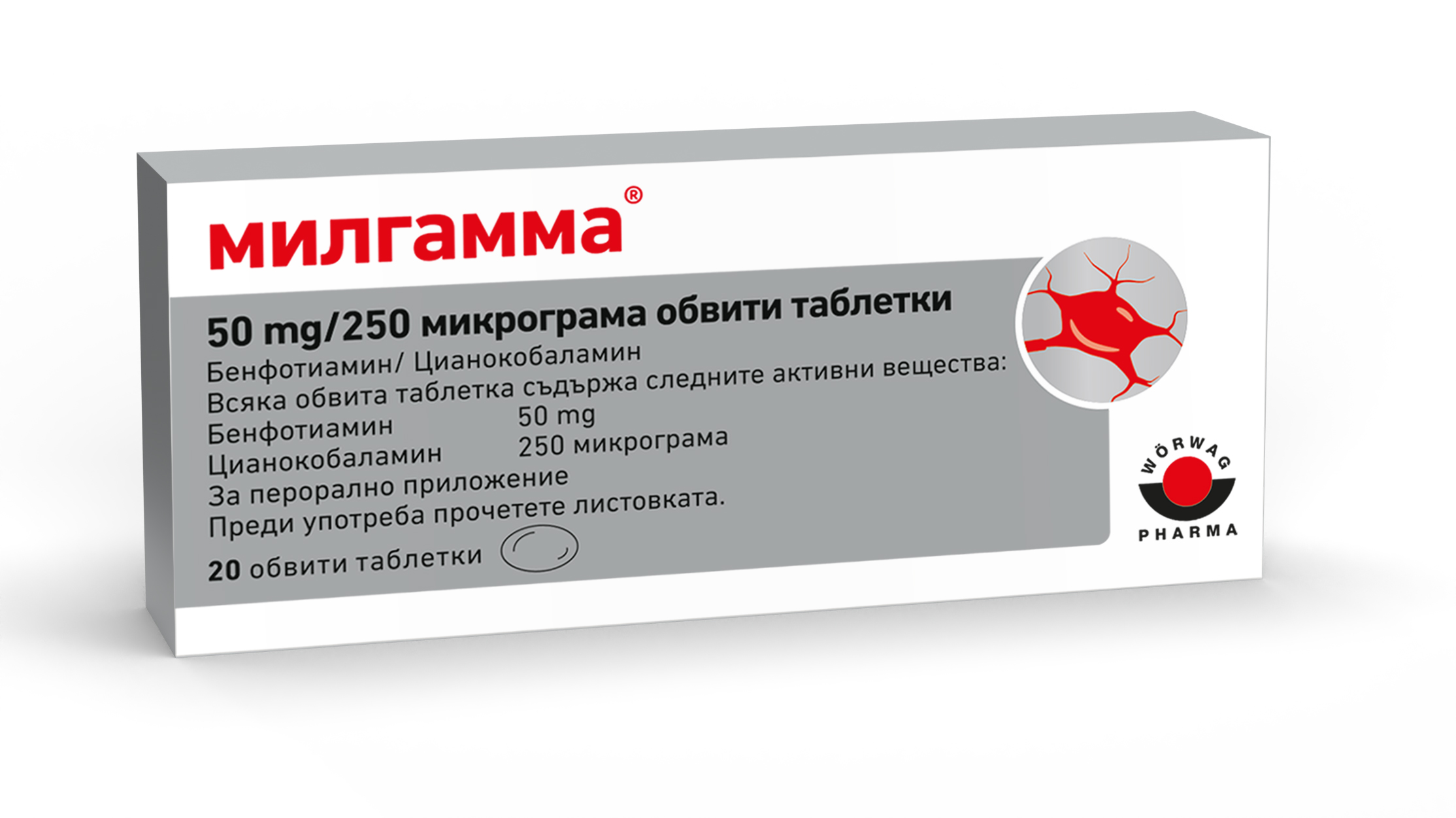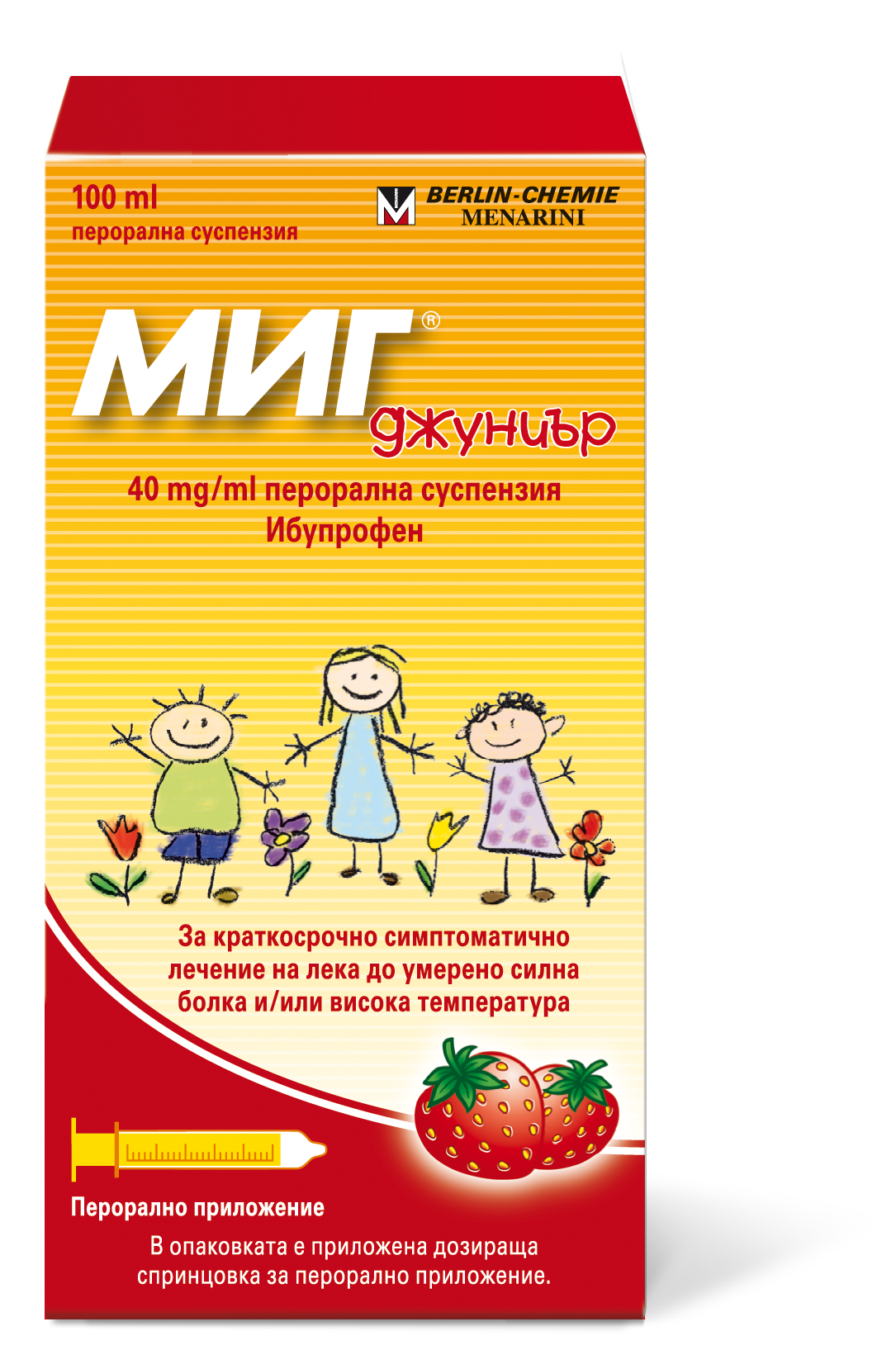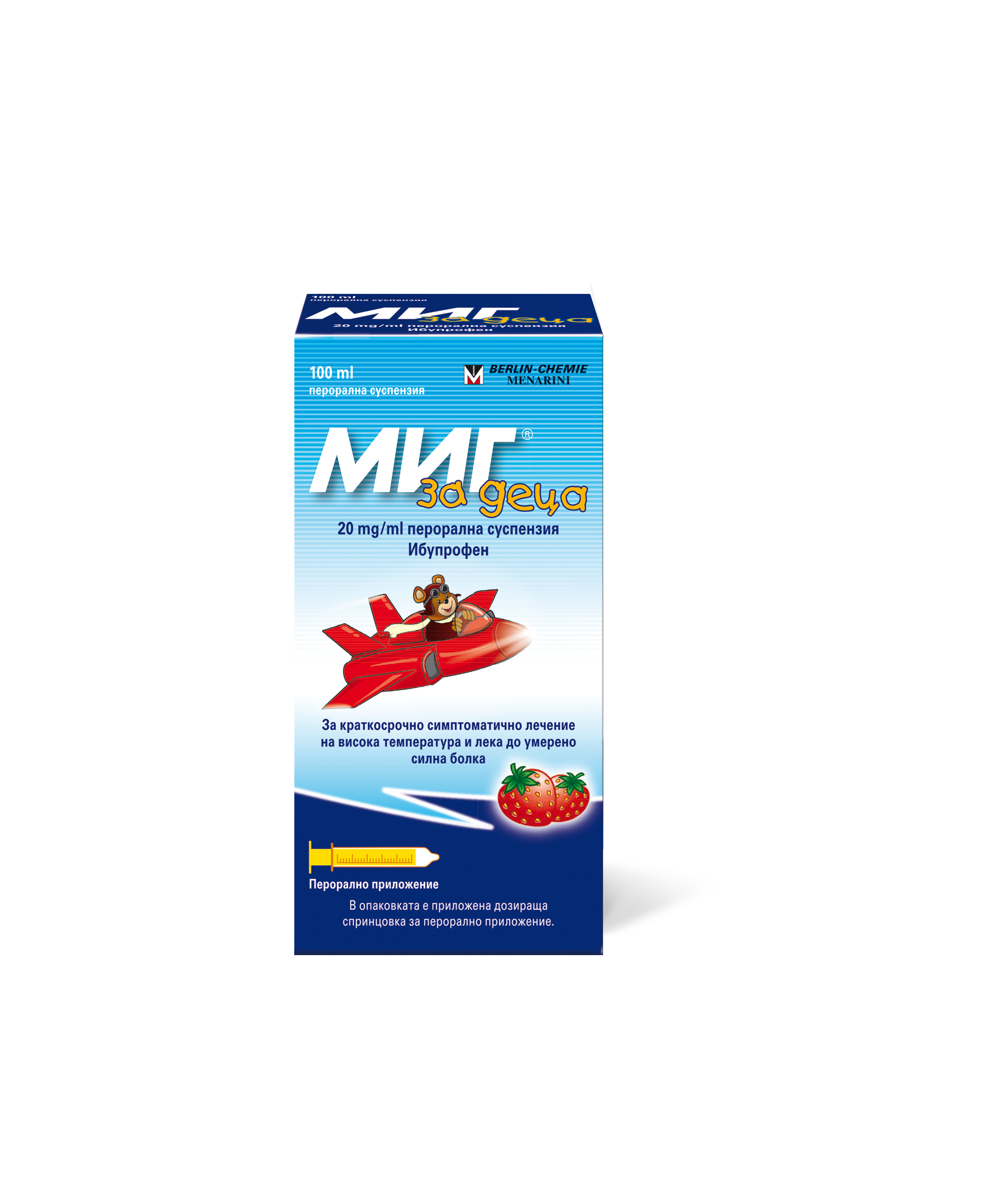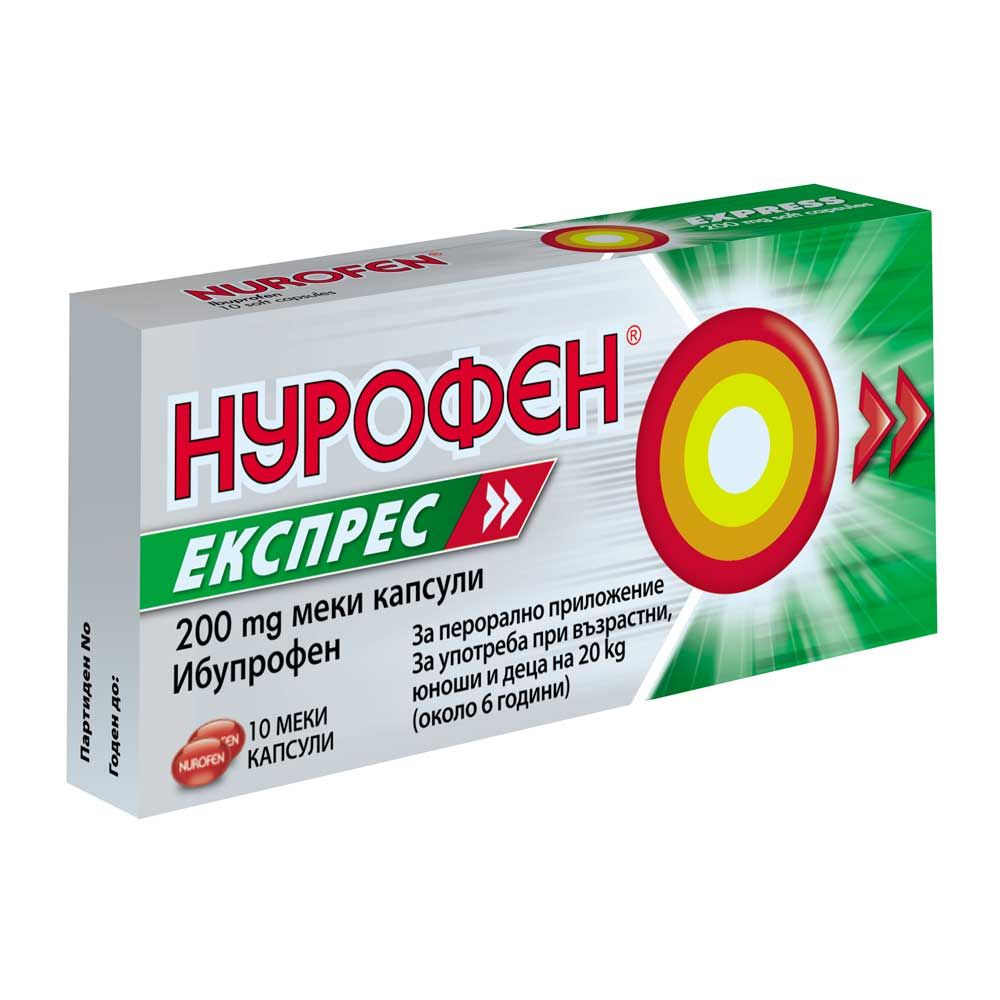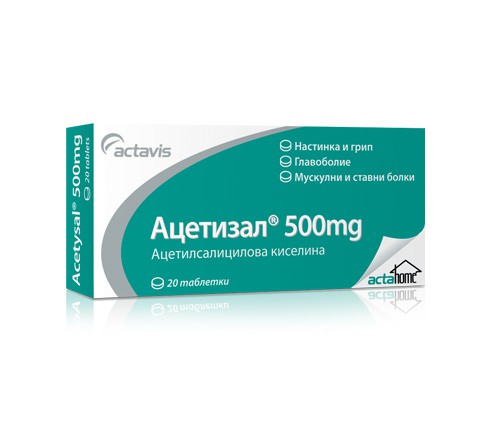MIG oral susp 20mg/ml 100ml /for children/
1.NAME OF THE MEDICINAL PRODUCT
MIG for Children 20 mg/ml oral suspension MIG for Children 20 mg/ml oral suspension
2. QUALITATIVE AND QUANTITATIVE COMPOSITION
1 ml of suspension contains 20 mg ibuprofen. Excipients with known effect
1 ml of oral suspension contains 500 mg liquid maltitol and 3.7 mg sodium.
For the full list of excipients, see section 6.1.
3.PHARMACEUTICAL FORM
Oral suspension
white to off-white viscous suspension
4.CLINICAL DATA
- Therapeutic indications
For short-term symptomatic treatment of
- high temperature
- mild to moderate pain
MIG for children is indicated for children weighing from 5 kg (6 months old) to 29 kg (9 years old).
4.2 Dosage and method of administration
Dosage
The dose is in accordance with the table below. In children, MIG for children is dosed according to body weight or age, generally from 7 to 10 mg/kg body weight as a single dose up to a maximum of 30 mg/kg body weight as a total daily dose.
The interval between doses is in accordance with the symptoms and the maximum daily dose. It should not be less than 6 hours. The recommended dose should not be exceeded.
For oral use.
For short-term use only.
If the use of this medicinal product is required for more than 3 days or if symptoms worsen, a doctor should be consulted.
Body weight (age) | Single dose | Maximum daily dose |
5kg - 6kg (infants 6 – 8 months old) | 50 mg ibuprofen | 150 mg of ibuprofen per day |
7kg - 9kg (infants 9 – 12 months) | 50 mg ibuprofen | 200 mg of ibuprofen per day |
10kg – 15kg (infants/children 1 – 3 years old) | 100 mg ibuprofen | 300 mg of ibuprofen per day |
16kg – 20kg (children 4 – 6 years old) | 150 mg ibuprofen | 450 mg ibuprofen per day |
21kg – 29kg (children 7 – 9 years old) | 200 mg ibuprofen | 600 mg of ibuprofen per day |
Undesirable effects may be minimised by using the lowest effective dose for the shortest duration necessary to control symptoms (see section 4.4).
Special patient groups
Renal impairment (see sections 4.4 and 5.2):
No dose reduction is required in patients with mild to moderate renal impairment (for patients with severe renal insufficiency, see section 4.3).
Hepatic insufficiency (see sections 4.4 and 5.2):
No dose reduction is required in patients with mild to moderate hepatic impairment (for patients with severe hepatic dysfunction, see section 4.3).
Paediatric population:
MIG for children is not recommended for use in infants under 6 months of age or under 5 kg.
Method of administration
MIG for children is taken during or after meals.
For patients with sensitive stomachs, it is recommended that MIG for children be taken with meals.
Shake before use. For accurate dosing, a dosing syringe (graduated in half milliliters up to 5 ml) is included in the package.
4.3Contraindications
MIG for children is contraindicated in patients with:
- hypersensitivity to the active substance or to any of the excipients listed in section 6.1;
- history of bronchospasm, asthma, rhinitis, angioedema or urticaria associated with taking acetylsalicylic acid or other non-steroidal anti-inflammatory drugs (NSAIDs);
- unexplained disorders in blood formation;
- active or history of recurrent peptic ulcer/bleeding (two or more separate episodes of proven ulceration or bleeding);
- history of gastrointestinal bleeding or perforation associated with previous NSAID treatment;
- cerebrovascular or other active hemorrhage;
- severe liver or kidney failure;
- severe heart failure (NYHA Class IV);
- severe dehydration (caused by vomiting, diarrhea or insufficient fluid intake);
- pregnancy in the last trimester (see section 4.6).
4.4 Special warnings and precautions for use
Undesirable effects may be minimised by using the lowest effective dose for the shortest duration necessary to control symptoms (see sections 4.2 and 4.8).
Gastrointestinal safety
Concomitant administration of MIG to children with NSAIDs, including cyclooxygenase-2 selective inhibitors, should be avoided.
Old age
Elderly patients exhibit an increased frequency of adverse reactions to
NSAIDs, especially gastrointestinal bleeding and perforation, which may be fatal (see section 4.2).
Gastrointestinal bleeding, ulceration and perforation:
Gastrointestinal bleeding, ulceration or perforation, which can be fatal, have been reported with all NSAIDs at any time during treatment, with or without warning.
symptoms or prior history of severe gastrointestinal events.
The risk of gastrointestinal bleeding, ulceration or perforation is higher with increasing
NSAIDs should be used with caution in patients with a history of ulcer, particularly if complicated by haemorrhage or perforation (see section 4.3) and in the elderly. These patients should start treatment with the lowest possible dose. In these patients, as well as in patients requiring
concomitant use of low-dose acetylsalicylic acid or other drugs that increase gastrointestinal risk, combination treatment with
protective agents (e.g. misoprostol or proton pump inhibitors) (see below and section 4.5).
Patients with a history of gastrointestinal toxicity, especially in the elderly, should report any unusual abdominal symptoms (especially gastrointestinal bleeding) especially in the initial stages of treatment.
Caution is advised in patients receiving concomitant medications that may increase the risk of ulceration and bleeding, such as oral corticosteroids, anticoagulants such as warfarin, selective serotonin reuptake inhibitors or
antithrombotic agents, such as acetylsalicylic acid (see section 4.5).
If gastrointestinal bleeding or ulceration occurs in patients taking MIG for children, treatment should be discontinued.
NSAIDs should be used with caution in patients with a history of gastrointestinal diseases (ulcerative colitis, Crohn's disease) as these conditions may be exacerbated (see 4.8).
Cardiovascular and cerebrovascular effects
Caution (consultation with a doctor or pharmacist) is required before starting treatment in patients with a history of hypertension and/or heart failure, as fluid retention, hypertension and edema have been reported in association with NSAID treatment.
Clinical studies have shown that the use of ibuprofen, particularly at high doses (2400 mg/day), may be associated with a small increased risk of arterial thrombotic events (e.g. myocardial infarction or stroke). Overall, epidemiological studies have not
show that low doses of ibuprofen (e.g. £1200 mg/day) are associated with an increased risk of arterial thrombotic events.
Patients with uncontrolled hypertension, congestive heart failure (NYHA II-III), established ischemic heart disease, peripheral arterial disease and/or cerebrovascular disease
vascular disease should be treated with ibuprofen only after careful consideration and high doses (2400 mg/day) should be avoided.
Careful consideration should also be given to initiating long-term treatment in patients with risk factors for cardiovascular events (i.e. hypertension,
hyperlipidemia, diabetes mellitus, smoking), especially with high doses of ibuprofen (2400 mg/day).
Severe skin reactions
Severe skin reactions, some of which were fatal, including exfoliative dermatitis, Stevens-Johnson syndrome and toxic epidermal necrolysis, have been reported very rarely.
rarely in association with the use of NSAIDs (see section 4.8). Patients are at highest risk of developing these reactions early in the course of treatment: the onset of the reaction is in most cases within the first month of treatment. Acute generalised
acute generalised exanthematous pustulosis (AGEP) in association with ibuprofen-containing products. Children's IUGR should be discontinued at the first appearance of skin rash, mucosal lesions or any other sign of
hypersensitivity.
Exceptionally, varicella may be the cause of serious infectious complications of the skin and soft tissues. At this time, the role of NSAIDs for
worsening of these infections. It is therefore advisable to avoid the use of MIG for children in cases of chickenpox.
Other notes
LAG for children should only be used after a strict benefit-risk assessment:
- in systemic lupus erythematosus (SLE) and mixed connective tissue disease – increased risk of aseptic meningitis (see section 4.8);
- congenital disorders of porphyrin metabolism (e.g. acute intermittent porphyria).
Particularly close monitoring by a doctor is required:
- in case of impaired renal function (as acute deterioration of renal function may occur in patients with pre-existing renal disease);
- in case of dehydration (there is a risk of kidney damage in dehydrated children and adolescents);
- in liver dysfunction;
- immediately after major surgical procedures;
- in patients who suffer from hay fever, nasal polyps, chronic swelling of the nasal mucosa or chronic obstructive respiratory diseases, as they are at increased risk of allergic reactions. These may manifest as asthma attacks (so-called analgesic asthma), angioedema or urticaria;
- in patients who react allergically to other substances, as they are at increased risk of hypersensitivity reactions when using MIG for children.
Severe acute hypersensitivity reactions (e.g. anaphylactic shock) have been observed very rarely. At the first signs of a hypersensitivity reaction after taking/administering MIG for children, treatment should be discontinued. In accordance with
If symptoms occur, medical measures should be taken by specialized personnel.
Respiratory disorders: caution is required when LAG for children is administered to patients who suffer from or have a history of bronchial asthma, as NSAIDs have been reported to exacerbate
bronchospasm in these patients.
Ibuprofen, the active ingredient in MIG for children, may temporarily inhibit platelet function (platelet aggregation). Therefore, patients with bleeding disorders should be carefully monitored.
With prolonged use of MIG for children, regular monitoring of liver values, kidney function and blood count is required.
Prolonged use of any type of painkiller for headaches may lead to their worsening. If this occurs or is suspected, consultation with a doctor is necessary.
doctor and discontinuation of treatment. The diagnosis of medication overdose headache should be considered in patients who have frequent or daily headaches despite (or because of) regular use of headache medications.
In general, regular use of painkillers, especially a combination of several
pain-relieving active substances, may lead to persistent kidney damage with a risk of kidney failure (analgesic nephropathy).
When alcohol is administered concomitantly with NSAIDs, adverse reactions related to the active substance, especially with regard to the gastrointestinal tract or the central nervous system, may be intensified.
NSAIDs may mask symptoms of infection and fever. Regarding female fertility, see section 4.6.
This medicinal product contains liquid maltitol. Patients with rare hereditary problems of fructose intolerance should not take this medicine.
This medicinal product contains 3.7 mg sodium per ml. To be taken into consideration by patients on a controlled sodium diet.
4.5 Interaction with other medicinal products and other forms of interaction
Ibuprofen (like other NSAIDs) should be used with caution with the following medicinal substances:
Other NSAIDs, including salicylates
The concomitant use of several NSAIDs may increase the risk of gastrointestinal ulcers and bleeding due to a synergistic effect. Therefore, the concomitant use of ibuprofen with other NSAIDs should be avoided (see section 4.4).
Digoxin, Phenytoin, Lithium
Concomitant administration of MIG for children with digoxin, phenytoin and lithium may increase serum levels of these medicinal products. With proper administration (maximum 3 days), monitoring of serum levels of lithium, digoxin and phenytoin is generally not necessary.
Diuretics, ACE inhibitors, beta-receptor blockers and angiotensin-II antagonists NSAIDs may reduce the effect of diuretics and other antihypertensive drugs.
In some patients with compromised renal function (e.g. dehydrated patients or elderly patients with compromised renal function), the concomitant use of ACE inhibitors, beta-receptor blockers or angiotensin II antagonists and agents that inhibit cyclooxygenase may lead to additive renal impairment.
renal function, including possible acute renal failure, which is usually reversible. Therefore, the combination should be used with caution, especially in the elderly. Patients should be adequately hydrated and consideration should be given to monitoring renal function after initiation of combination therapy and periodically thereafter.
Concomitant use of LAG for children and potassium-sparing diuretics may lead to hyperkalemia.
Corticosteroids
Increased risk of gastrointestinal ulceration and bleeding (see section 4.4).
Antiplatelet agents and selective serotonin reuptake inhibitors (SSRIs)
Increased risk of gastrointestinal bleeding (see section 4.4).
Acetylsalicylic acid
The simultaneous use of ibuprofen and acetylsalicylic acid is generally not recommended due to the possibility of increased adverse effects.
Experimental data suggest that ibuprofen may competitively inhibit the effect of low-dose acetylsalicylic acid on platelet aggregation when administered concomitantly. Although there is uncertainty regarding the extrapolation of these data to
clinical cases, the possibility that regular, long-term use of ibuprofen may reduce the cardioprotective effect of low-dose acetylsalicylic acid cannot be excluded.
It is considered unlikely that accidental use of ibuprofen would lead to a clinically significant effect (see section 5.1).
Methotrexate
Administration of MIG to children 24 hours before or after methotrexate administration may lead to increased concentrations of methotrexate and potentiate its toxic effect.
Cyclosporine
The risk of kidney damage from ciclosporin may be increased by concomitant use of certain non-steroidal anti-inflammatory drugs. This effect cannot be excluded also when ciclosporin is combined with ibuprofen.
Anticoagulants
NSAIDs may enhance the effect of anticoagulants, such as warfarin (see section 4.4).
Sulfonylureas
Clinical studies have shown interactions between nonsteroidal anti-inflammatory drugs and antidiabetic drugs (sulfonylureas). Although no interactions have been reported to date,
Interactions between ibuprofen and sulfonylureas have been reported, and monitoring of blood sugar levels is recommended as a precautionary measure when used concomitantly.
Tacrolimus
The risk of nephrotoxicity increases with the simultaneous administration of both medicinal products.
Zidovudine
There is evidence of an increased risk of hemarthroses and hematomas in HIV-positive hemophiliacs who take zidovudine and ibuprofen concurrently.
Probenecid and sulfinpyrazone
Medicinal products containing probenecid and sulfinpyrazone may delay the excretion of ibuprofen.
Quinolone antibiotics
Animal data suggest that NSAIDs may increase the risk of seizures associated with quinolone antibiotics. Patients taking NSAIDs and quinolones may have an increased risk of seizures.
CYP2C9 inhibitors
Concomitant administration of ibuprofen with CYP2C9 inhibitors may increase
exposure to ibuprofen (CYP2C9 substrate). In a study with voriconazole and fluconazole
(CYP2C9 inhibitors) have been shown to increase exposure to S(+)-ibuprofen by approximately 80 to 100%. A reduction in the ibuprofen dose should be considered when co-administered with potent CYP2C9 inhibitors, especially if high doses of ibuprofen are administered with voriconazole and fluconazole.
4.6Fertility, pregnancy and lactation
Pregnancy
Inhibition of prostaglandin synthesis may adversely affect pregnancy and/or embryonal/foetal development. Data from epidemiological studies have shown an increased risk of spontaneous abortion and cardiac malformations and gastroschisis after use of prostaglandin synthesis inhibitors in early pregnancy. The risk is believed to increase with dose and duration of therapy.
In animals, administration of prostaglandin synthesis inhibitors has resulted in increased pre- and post-implantation losses and embryo-foetal lethality. In addition, an increased incidence of various malformations, including cardiovascular, has been reported in animals treated with prostaglandin synthesis inhibitors during the period of organogenesis.
During the first and second trimesters of pregnancy, ibuprofen should not be used unless clearly necessary. If ibuprofen is used by women attempting to conceive or during the first and second trimesters of pregnancy, the dose should be kept as low and the duration of treatment as short as possible.
During the third trimester of pregnancy, all prostaglandin synthesis inhibitors:
- may expose the fetus to:
- cardiopulmonary toxicity (with premature closure of the ductus arteriosus and pulmonary hypertension);
- renal dysfunction, which may progress to renal failure and oligohydramnios;
- can lead to:
- possible increased bleeding time, an anticoagulant effect that may occur even at very low doses;
- suppression of uterine contractions, leading to delayed or prolonged labor.
Therefore, ibuprofen is contraindicated during the third trimester of pregnancy. Breastfeeding
Ibuprofen and its metabolites pass into breast milk in small amounts. Thus
As no harmful effects on the infant are known so far, in principle, short-term use of ibuprofen in recommended doses does not require discontinuation of the drug.
breastfeeding.
Fertility
There is evidence that drugs that inhibit cyclooxygenase/prostaglandin synthesis may impair female fertility by affecting ovulation. This is reversible upon discontinuation of treatment.
4.7 Effects on ability to drive and use machines
Since the use of high doses of MIG for children may cause adverse reactions from the central nervous system, such as fatigue and dizziness, in isolated cases
The ability to react and actively participate in road traffic and operating machinery may be impaired. This is especially true when combined with alcohol.
4.8 Adverse drug reactions
The following frequency is used as a basis for assessing adverse reactions:
Very common: ≥ 1/10;
Common: ≥1/100 to <1/10;
Uncommon: ≥1/1,000 to < 1/100;
Rare: ≥1/10,000 to < 1/1,000;
Very rare: < 1/10,000;
Not known: frequency cannot be estimated from the available data.
The following list of adverse reactions covers all adverse reactions known to occur with ibuprofen, including those occurring at high doses over a long period of time in patients with rheumatism. The frequency given refers to very rare reports, with short-term use of doses up to a maximum of 1200 mg ibuprofen for oral dosage forms and a maximum of 1800 mg for suppositories.
It should be noted that the following adverse reactions are dose-dependent and vary between patients.
The most frequently observed adverse reactions are gastrointestinal in origin. Peptic ulcers, perforation or gastrointestinal bleeding, sometimes fatal, may occur, especially in the elderly (see section 4.4). Nausea, vomiting, diarrhoea, flatulence, constipation, dyspepsia, abdominal pain, melaena, haematemesis, ulcerative colitis have been reported following administration.
stomatitis, exacerbation of colitis and Crohn's disease (see section 4.4). Gastritis has been observed less frequently. The risk of gastrointestinal bleeding depends on the dose administered and the duration of use.
There have been reports of edema, hypertension, and heart failure in association with NSAID treatment.
Clinical studies have shown that the use of ibuprofen, especially at high doses (2400 mg/day), may be associated with a slightly increased risk of arterial thrombotic events (e.g. myocardial infarction or stroke) (see 4.4).
Infections and infestations
Very rare: exacerbation of infectious inflammations (e.g. development of necrotizing fasciitis) has been described with the use of non-steroidal anti-inflammatory drugs.
This is most likely related to the mechanism of action of nonsteroidal anti-inflammatory drugs.
If signs of infection appear or worsen during the use of MIG for children, the patient is advised to consult a doctor immediately. It should be assessed whether this is an indication for anti-infective/antibiotic therapy.
Very rare: symptoms of aseptic meningitis with stiff neck, headache, nausea, vomiting, fever and confusion have been observed with ibuprofen. Patients with autoimmune diseases (SLE, mixed connective tissue disease) appear to be predisposed.
Blood and lymphatic system disorders
Very rare: blood disorders (anemia, leukopenia, thrombocytopenia, pancytopenia, agranulocytosis).
The first signs may be fever, sore throat, superficial mouth sores, flu-like symptoms, severe fatigue, nosebleeds and skin bleeding. In these
In such cases, the patient should be advised to immediately stop the medication and avoid self-medication with analgesics or antipyretics and consult a doctor.
Blood counts should be monitored regularly during prolonged treatment. Immune system disorders
Uncommon: hypersensitivity reactions with skin rash and itching, as well as asthmatic reactions
seizures (with possible drop in blood pressure).
The patient should be instructed to notify a physician immediately and stop taking MIG for children in this case.
Very rare: severe generalised hypersensitivity reactions. These may manifest as facial oedema, tongue swelling, laryngeal oedema with narrowing of the airways, respiratory distress, palpitations, drop in blood pressure to
life-threatening shock.
If any of these symptoms occur, which can happen even with the first application, immediate medical intervention is required.
Mental disorders
Very rare: psychotic reactions, depression.
Nervous system disorders
Uncommon: central nervous system disorders such as headache, dizziness, insomnia, agitation, anxiety, irritability or fatigue.
Eye disorders
Uncommon: visual disturbances. In this case, the patient should be instructed to immediately inform a doctor and discontinue ibuprofen.
Ear and labyrinth disorders Rare: tinnitus.
Cardiac disorders
Very rare: palpitations, heart failure, myocardial infarction.
Vascular disorders
Very rare: arterial hypertension.
Respiratory, thoracic and mediastinal disorders
Very rare: asthma, bronchospasm, dyspnoea and wheezing.
Gastrointestinal disorders
Common: gastrointestinal complaints such as heartburn, abdominal pain, nausea, vomiting,
flatulence, diarrhea, constipation and mild gastrointestinal bleeding, which exceptionally can lead to anemia.
Uncommon: gastrointestinal ulcers, with possible haemorrhage or perforation. Ulcerative stomatitis, exacerbation of colitis or Crohn's disease (see section 4.4), gastritis.
Very rare: oesophagitis, pancreatitis, formation of intestinal diaphragm-like structures.
The patient should be instructed to stop taking the medicinal product and seek medical advice immediately if they experience relatively severe upper abdominal pain or melena or haematemesis.
Hepatobiliary disorders
Very rare: liver function disorders, liver damage, especially with prolonged treatment, liver failure, acute hepatitis.
Skin and subcutaneous tissue disorders Uncommon: various skin rashes.
Very rare: bullous reactions, including Stevens-Johnson syndrome and toxic epidermal necrolysis (Lyell's syndrome), alopecia.
Not known: drug reaction with eosinophilia and systemic symptoms (DRESS syndrome), acute generalized exanthematous pustulosis (AGEP).
Exceptionally, severe skin infections and soft tissue complications of varicella may occur (see also “Infections and Parasitoses”).
Kidney and urinary tract disorders
Rare: damage to kidney tissue (papillary necrosis), especially with prolonged use, increased serum uric acid concentrations in the blood.
Very rare: decreased urine excretion and edema formation, especially in patients with
arterial hypertension or with renal failure, nephrotic syndrome, interstitial nephritis, which may be accompanied by acute renal failure.
Damage to kidney tissue (papillary necrosis) and increased concentrations of uric acid in the blood may also occur in rare cases.
Therefore, kidney function should be monitored regularly. Reporting of suspected side effects
Reporting of suspected adverse reactions after authorisation of a medicinal product is important. This allows the benefit-risk balance of the medicinal product to be monitored. Healthcare professionals are asked to report any suspected adverse reactions via the national reporting system:
Executive Agency for Medicines 8 Damyan Gruev Street
1303 Sofia
Tel.: +359 28903417
website: www.bda.bg
4.9Overdose
Symptoms of overdose
Symptoms of overdose may include central nervous system disorders such as headache, dizziness, lightheadedness and loss of consciousness (and in children myoclonic seizures), as well as abdominal pain, nausea and vomiting. Gastrointestinal disturbances are also possible.
intestinal bleeding and impaired liver and kidney function. In addition, hypotension, respiratory depression and cyanosis may occur. In severe poisoning, metabolic acidosis may occur.
Therapeutic measures in case of overdose There is no specific antidote.
Therapeutic options for treating intoxication are guided by the degree, severity, and clinical symptoms according to general intensive care measures.
5.PHARMACOLOGICAL PROPERTIES
- Pharmacodynamic properties
Pharmacotherapeutic group: anti-inflammatory and antirheumatic products, non-steroidal
Propionic acid derivatives ATC code: M01AE01
Mechanism of action
Ibuprofen is a nonsteroidal anti-inflammatory drug that has been shown to be effective in conventional animal models of inflammation by inhibiting prostaglandin synthesis. In humans, ibuprofen has an antipyretic effect, reduces
inflammation-related pain and swelling. In addition, ibuprofen reversibly inhibits ADP- and collagen-induced platelet aggregation.
Clinical efficacy and safety
Experimental data indicate that ibuprofen may competitively inhibit the effect of low-dose acetylsalicylic acid on platelet aggregation when administered concomitantly. Some pharmacodynamic studies have shown that when administered with
A single dose of 400 mg ibuprofen administered within 8 hours before or within 30 minutes after immediate-release acetylsalicylic acid (81 mg) reduced the effect of acetylsalicylic acid on thromboxane formation or platelet aggregation. Although there is uncertainty about
Extrapolating these data to clinical cases, the possibility that regular, long-term use of ibuprofen may reduce the cardioprotective effect of low-dose acetylsalicylic acid cannot be excluded. It is considered unlikely that occasional use of ibuprofen would lead to a clinically relevant effect (see section 4.5).
5.2Pharmacokinetic properties
Absorption
When administered orally, ibuprofen is partially absorbed in the stomach and then completely in the small intestine. Peak plasma levels with oral administration of normal-release dosage forms are reached after 1-2 hours.
Distribution
Plasma protein binding is about 99%.
Biotransformation
Ibuprofen is metabolized in the liver (hydroxylation, carboxylation)
Elimination
Pharmacologically inactive metabolites are eliminated entirely, primarily via the kidneys (90
%), but also through the bile. The elimination half-life in healthy individuals, as well as in those with liver and kidney diseases, is 1.8 - 3.5 hours.
Kidney damage
Increased levels of unbound (S)-ibuprofen, higher AUC values for unbound (S)-ibuprofen and increased AUC of the S/R enantiomers have been reported in patients with mild renal impairment compared to healthy subjects.
In end-stage renal failure patients on haemodialysis, the mean free fraction of ibuprofen was 3% compared to 1% in healthy volunteers. Severe renal impairment
Impaired renal function may lead to accumulation of ibuprofen metabolites. It is not
The significance of this effect is unclear. Metabolites can be eliminated by haemodialysis (see sections 4.2, 4.3 and 4.4).
Liver disorder
In patients with cirrhosis and moderate hepatic impairment (Child Pugh's score 6-10) treated with racemic ibuprofen, an average 2-fold prolongation of the half-life was observed and the AUC ratio of the enantiomers (S/R) was significantly lower compared to healthy subjects.
controls, suggesting an impairment of the conversion of the metabolite (R)-ibuprofen to the active (S)-enantiomer (see sections 4.2, 4.3 and 4.4).
Linear/nonlinear kinetics
At doses of 200 to 400 mg, ibuprofen has been reported to exhibit linear kinetics. At higher doses, the drug exhibits nonlinear kinetics.
5.3Preclinical safety data
The subchronic and chronic toxicity of ibuprofen in animal studies is manifested mainly in the form of lesions and ulcers in the gastrointestinal tract.
In vitro and in vivo studies do not provide clinically relevant evidence that ibuprofen has
Mutagenic effects. There is no evidence of carcinogenic effects of ibuprofen in studies in rats and mice.
Ibuprofen inhibits ovulation in rabbits and impairs implantation in various animal species (rabbit, rat, mouse). Experimental studies in rats and rabbits have shown that ibuprofen crosses the placenta. After administration of doses toxic to the mother, an increased incidence of
malformations (ventricular septal defects).
6.PHARMACEUTICAL DATA
- List of excipients
Sodium benzoate
Citric acid, anhydrous Sodium citrate
Saccharin sodium Sodium chloride Hypromellose
Xanthan gum Liquid maltitol Glycerol Purified water
Strawberry flavor (contains substances identical to natural flavors, natural flavoring products, propylene glycol)
6.2 Incompatibilities
Not applicable
6.3 Shelf life
3 years
After first opening the bottle: 6 months if stored below 25ºС.
6.4 Special storage conditions
This medicinal product does not require any special storage conditions.
6.5Packaging details
Amber-coloured polyethylene terephthalate (PET) bottle with a high-density polyethylene (HDPE) screw cap secured with low-density polyethylene (LDPE).
Pack size: 100 ml and 200 ml oral suspension Not all pack sizes may be marketed.
A dosing syringe for oral administration is provided, graduated in half milliliter increments up to 5 ml.
6.6 Special precautions for disposal and handling
Any unused product or waste material should be disposed of in accordance with local requirements.
7. MARKETING AUTHORISATION HOLDER
Berlin-Chemie AG (Menarini Group) Glienicker Weg 125
12489 Berlin, Germany
8. MARKETING AUTHORISATION NUMBER(S)
20110424
9. DATE OF FIRST AUTHORISATION/RENEWAL OF THE AUTHORISATION
Date of first authorisation: 14.07.2011 Date of last renewal: 23.02.2015
10.DATE OF TEXT UPDATE
11/2019


